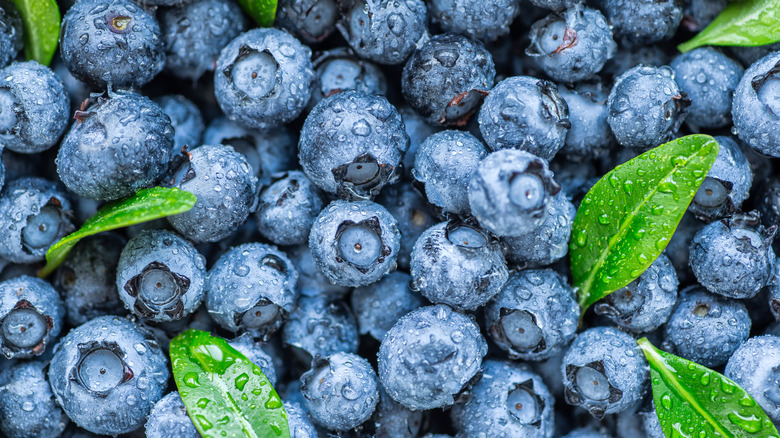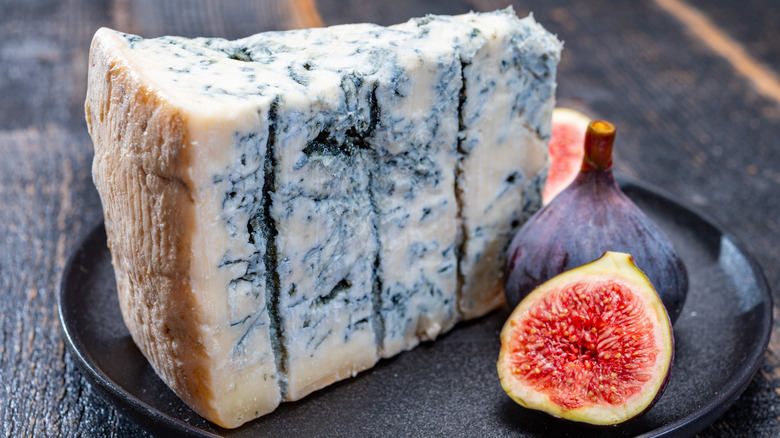Why Are So Few Foods Naturally Blue?
The grocery store's produce section is filled with various aromas, textures, and colors. It's almost like walking through a rainbow of fruits and vegetables. You have red cherries, oranges, yellow bananas, green granny smith apples, purple eggplants, and everything in-between. And then there are blueberries, which are aptly named for their hue ... or are they? If you've ever noticed, blueberries sport more of a violet or indigo tint, which becomes more apparent when they're baked into muffins or infused into smoothies. Why is this so?
To put it simply, the color blue is extremely rare in nature. The reason for this phenomenon has to do with some complex laws of biochemistry that have been studied at length over the years. The pigments that are visible in crops, flowers, and even animals are the result of different chemicals, according to Almanac. True blue, however, happens to occur so infrequently that it's often considered virtually nonexistent in the natural world. Here's a quick science lesson to explain how this is possible.
There is no true blue pigment in nature
The pigments that create a bluish tone in foods like blueberries and blue corn are called anthocyanins. Chris Gunter, a professor of horticultural science at North Carolina State University, explains that the colors produced by anthocyanins depend on density and pH levels, Kitchn reports. Pigments can also change throughout plants' life cycles as they become exposed to the elements, which is why, for example, unripened bananas have a green tinge and turn their iconic yellow as they mature (via Encyclopedia Britannica).
Anywho, back to the mystery of blue foods. In 2013, a product invented by lighting display company Konica Minolta Sensing made an appearance on the Food Network show "Food Detectives" to investigate foods that look blue. The segment featured a device called the spectrophotometer, which picks up the color wavelengths of objects. Results have shown that the foods many of us see as blue are, in reality, purple. Blue light has one of the highest energy wavelengths on the visible light spectrum, while red has the lowest. Therefore, plants can absorb blue light more quickly and use the energy to grow. Since they're using so much of the blue light, they're not reflecting it back at us, allowing us to see the color. So even though there are blue plants and fruits in nature, they're not really a "true" blue.

